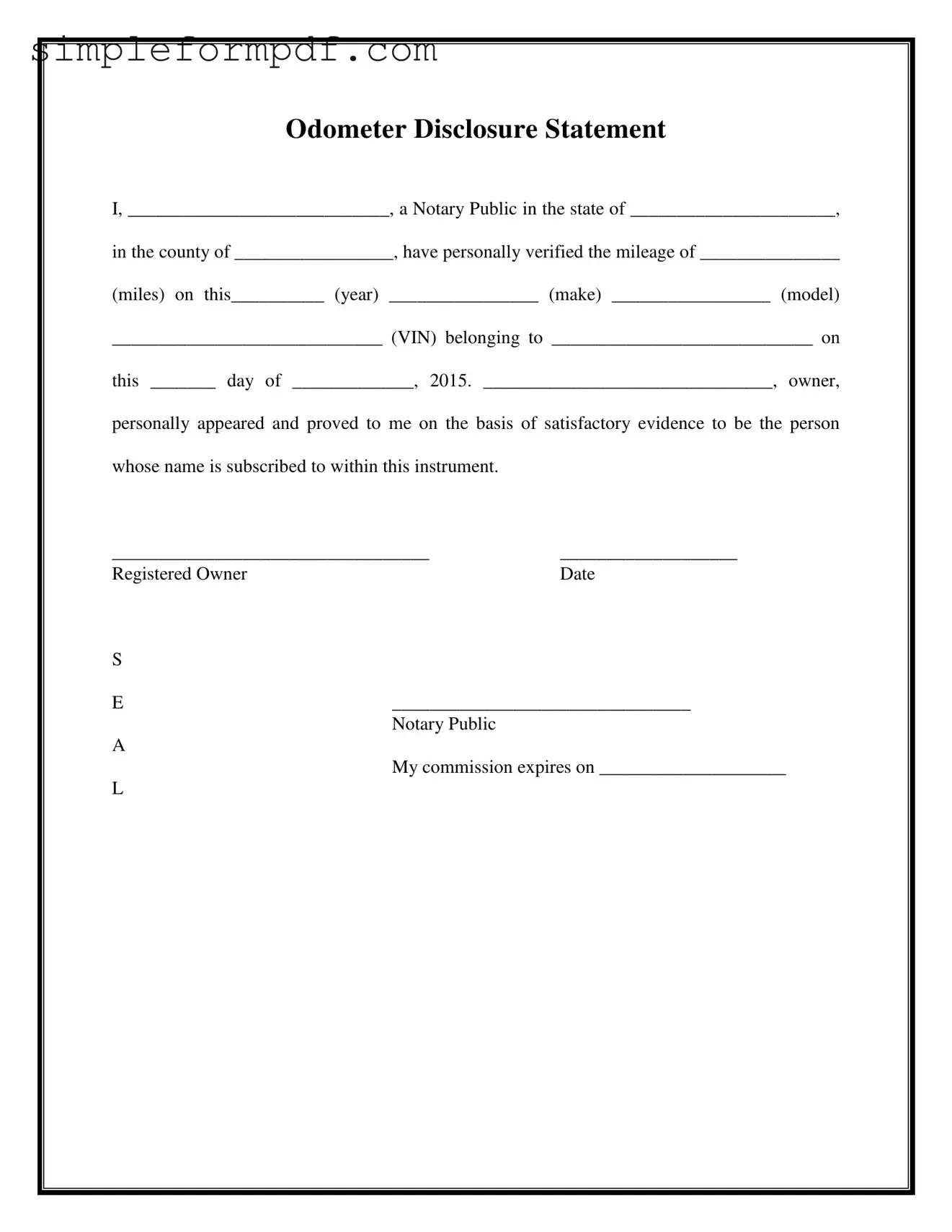Notarized Odometer Statement PDF Form
The Notarized Odometer Statement is a formal document that verifies the mileage of a vehicle at the time of sale. This statement is crucial for ensuring transparency in vehicle transactions, protecting both buyers and sellers from potential fraud. If you're ready to fill out this important form, click the button below!
Launch Editor

